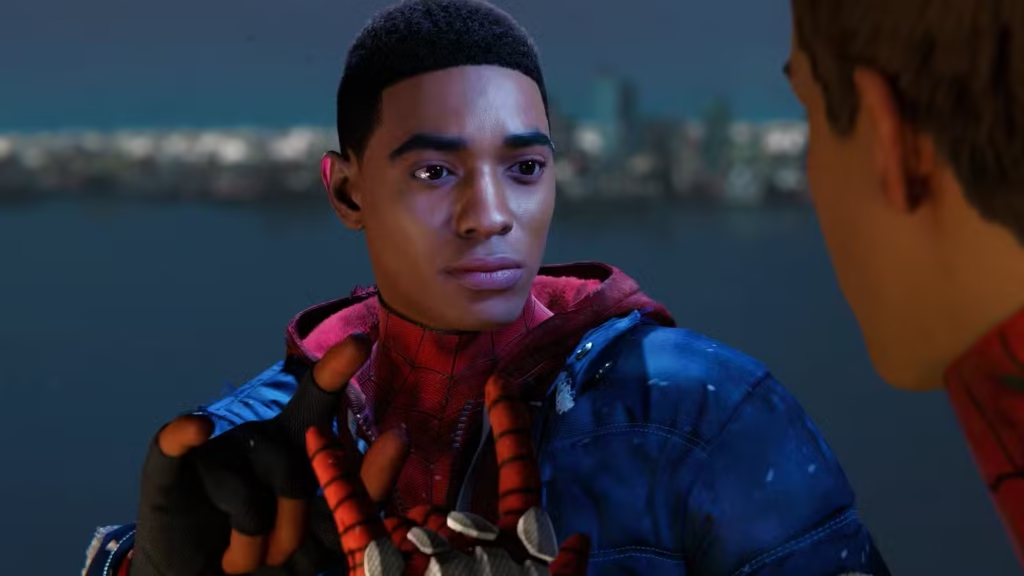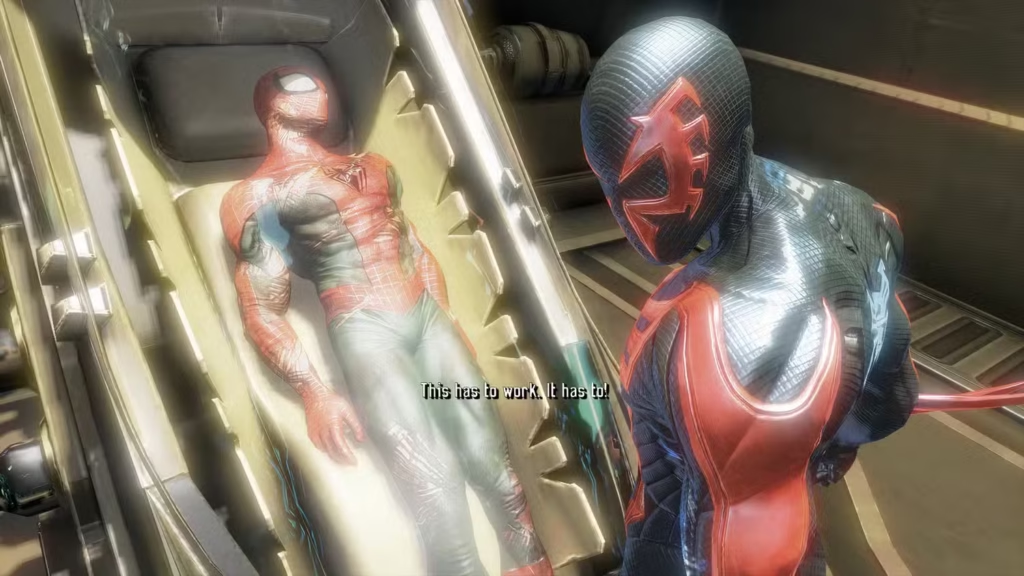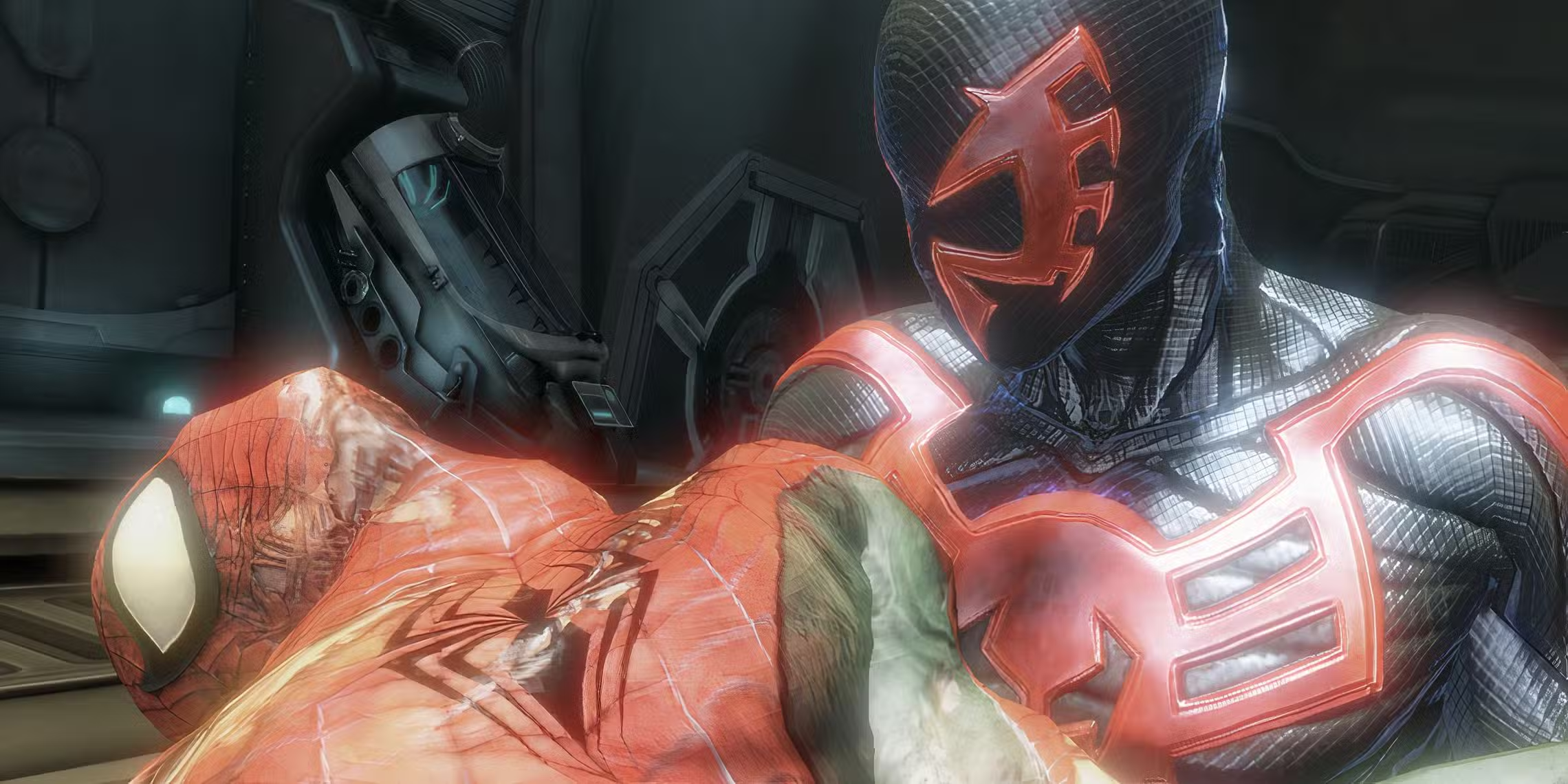The relationship between Peter Parker and Miles Morales in Marvel’s Spider-Man is a fascinating one, characterized by their shared experiences as web-slinging heroes. Each character brings a distinct set of gadgets and abilities to the table, which not only sets them apart but also enhances the gameplay experience. The differences in their skills are evident, making it easy for players to appreciate the unique styles of both Spider-Men. With the release of Marvel’s Spider-Man 2, these distinctions have become even more pronounced, showcasing Peter’s new metal appendages and symbiote powers, while Miles continues to develop his bioelectric and stealth capabilities through optic camouflage.
Interestingly, the character representation in Marvel’s Spider-Man could draw inspiration from Spider-Man: Edge of Time. In this narrative, we see Peter Parker’s Amazing Spider-Man and Miguel O’Hara’s Spider-Man 2099 portrayed distinctly, with their interactions limited to just a handful of scenes where they are physically present in the same space. Most of their communication occurs through a time-based connection, which adds a unique layer to their relationship. Despite this separation, the stark contrasts between their personalities and their approaches to being Spider-Man are evident, showcasing the diversity within the Spider-Man legacy.
Any Character Development in Marvel’s Spider-Man 3 May Be Too Little Too Late

In Marvel’s Spider-Man universe, both Peter Parker and Miles Morales embody similar ideals and motivations, showcasing a strong sense of conviction in their roles as heroes. Their shared commitment to justice and responsibility highlights the core values that define them as Spider-Men. However, despite their common ground, there has yet to be a significant conflict between the two regarding differing viewpoints on various dilemmas. This absence of confrontation suggests a harmonious relationship, but it also opens the door for deeper character exploration.
It seems that the bond between Peter and Miles primarily stems from their shared spider-like abilities, reminiscent of the relationship between Peter and Miguel in Spider-Man: Edge of Time. Despite this connection, Miles appears to be quite comfortable adhering to Peter’s principles without questioning how they should navigate their responsibilities in the expansive landscape of New York City. While Peter has largely operated within the law, steering clear of any morally ambiguous decisions, the Marvel’s Spider-Man series has not effectively developed the dynamic between Peter and Miles, leaving their partnership feeling somewhat underexplored.
The sole occasion when Peter and Miles have faced off against each other occurred when Peter was under the influence of the parasitic black symbiote. This entity amplifies the darker aspects of Peter’s emotions, transforming him into a temporary adversary. The symbiote’s effect is exaggerated, serving to heighten the drama of their confrontation, rather than representing Peter’s true nature. This scenario showcases how external forces can manipulate even the most heroic individuals, leading to conflicts that are more about the struggle against these influences than personal animosity.
It would be fascinating to witness Miles choose to give the Devil’s Breath antidote to someone he cares about, fully aware of the potential dangers involved, especially in contrast to Peter’s decision to avoid such risks. This scenario could highlight the complexities of their characters and the moral dilemmas they face. The tension between their choices could add depth to their relationship, showcasing how different perspectives can lead to significant consequences in their world.
Spider-Man: Edge of Time is Brilliant at Delineating Peter Parker and Miguel O’Hara

In “Spider-Man: Edge of Time,” the dynamic between Peter Parker and Miguel O’Hara highlights a fundamental disagreement regarding the core principles of being Spider-Man. Peter embodies a more traditional heroism, often prioritizing the needs of his loved ones, even if it means putting a larger group at risk. On the other hand, Miguel takes a more utilitarian approach, believing that the greater good justifies sacrificing a few individuals to save the majority. This clash of ideologies creates a compelling narrative tension that challenges both characters’ beliefs and motivations.
It’s truly remarkable to see Miguel initially oppose Peter’s decision yet eventually come around to support him. The contrast between their ideologies is striking, yet they find common ground as two Spider-Men who, despite their differences, share a deep-rooted commitment to protecting lives and fighting against crime. Their relationship highlights the beauty of empathy and understanding, showcasing how even the most divergent perspectives can unite for a common cause.
In the next installment of Marvel’s Spider-Man, it’s possible that the Spider-Men might encounter some disagreements, despite their long history of fighting crime side by side. Creating a scenario where they find themselves at odds could prove challenging, as it would require a surprising decision from one that leaves the other feeling alarmed. This dynamic could add depth to their relationship, but it would need to be handled carefully to maintain the organic feel of their partnership.
The most significant cliffhanger in Marvel’s Spider-Man 2 revolves around Peter Parker deciding to hang up his suit, at least temporarily. This pivotal moment opens up intriguing possibilities, especially if Peter finds himself at odds with Miles Morales regarding how he handles a super-villain or the choices he makes about who to save. As Miles embarks on his journey to establish the Emily-May Foundation from his garage, the tension between their differing approaches could add depth to their relationship and the storyline.

